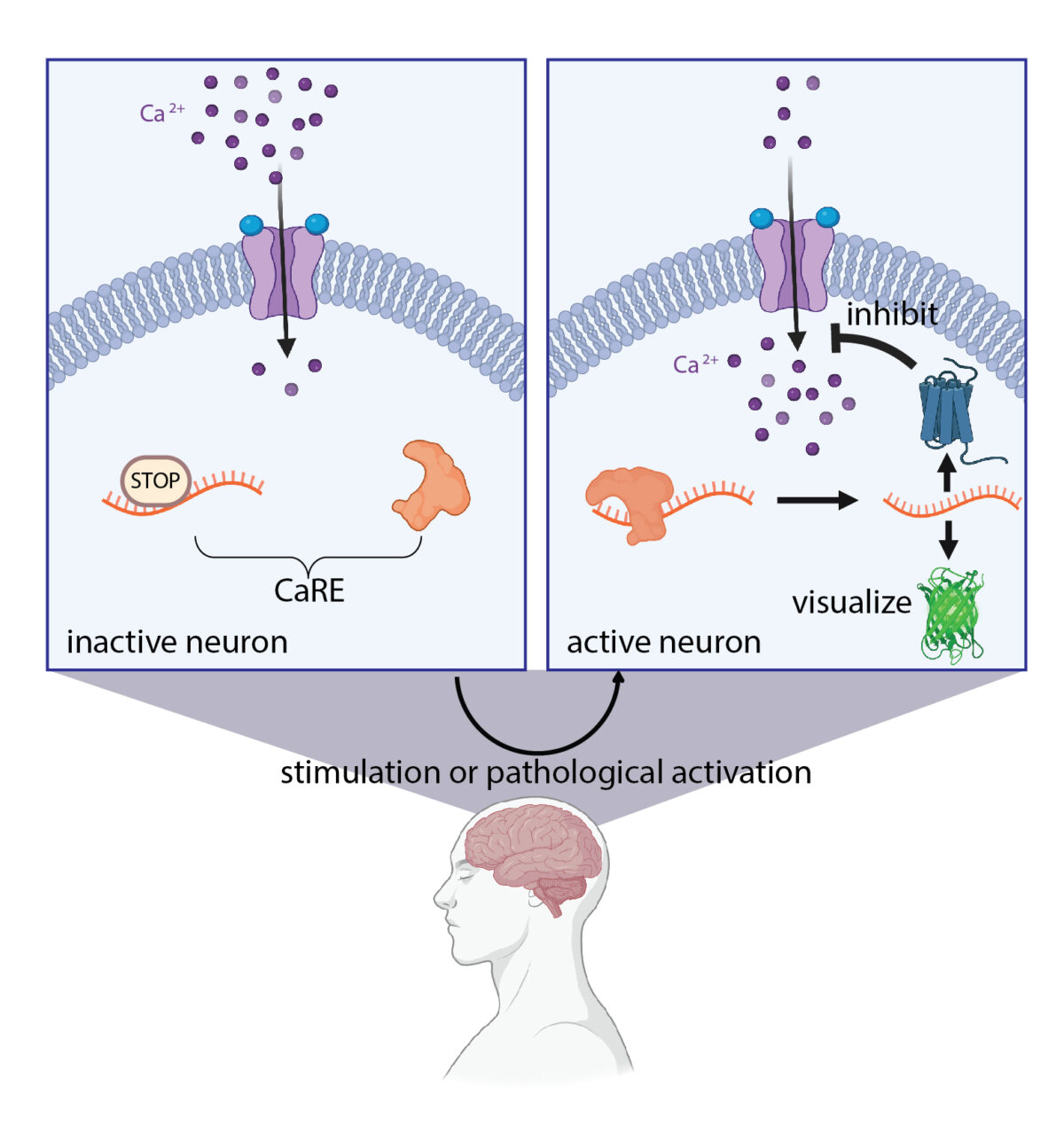Calcium-Regulated RNA Editing (CaRE) for Tagging and Manipulation of Functional Neural Circuits

CaRE enables precise manipulation of active neurons for both circuit discovery and the treatment of neural disorders in animal brains. In inactive neurons (top left), the mRNA reporter carries a STOP signal, preventing protein production. When neurons become active due to stimulation or disease (top right), the influx of calcium ions causes components of CaRE (orange) to come together and remove the STOP signal. This leads to the production of fluorescence proteins that can emit light (green), allowing these neurons to be visualized and their circuits identified. Inhibitory proteins (blue) can also be generated to suppress or eliminate the active neurons.

The molecular design of CaRE: Upon neural activation, calcium ions enter the neurons and bring together the two components of CaRE. This removes the STOP signal in the mRNA, leading to the production of proteins that can either visualize active neurons for discovering neural circuits, eliminate them for directly testing their roles in controlling behaviors, or silence their activity for treating neurological diseases caused by abnormal neural activation.
Drs. Xiaojing Gao, Alice Ting, Bo Wang, and their team seek to develop molecular tools to precisely tag and control neurons based on their activity and then use these tools for discovering functional neural circuits in the brain and beneficially manipulating brain function in disease. Understanding how neurons interact to produce behavior is a central goal in neuroscience. This Stanford team is pioneering CaRE (Calcium-regulated RNA Editing), a novel tool that detects active neurons and modifies them to either visualize or control their activity. This approach will allow them to map cellular networks in the brain that give rise to behaviors in diverse organisms, from mammalian systems like mouse to marine organisms that navigate unique environmental challenges. The insights gained from these efforts will shed light on fundamental principles underlying how brains manage complex tasks as well as what goes wrong in serious neurological disorders such as epilepsy. Their long-term goal is to develop transformative technologies for advancing the study of nervous system across all animals.

